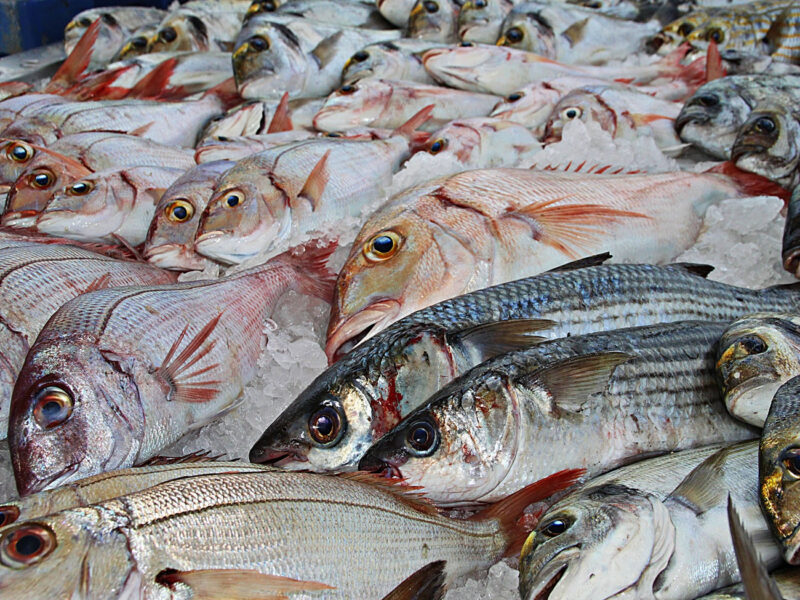Scientists are urging global policymakers and funders to consider fish as a solution to food insecurity and malnutrition, and not just as a natural source that provides income and livelihoods, published in the peer reviewed journal Ambio. Titled “Recognize fish as food in policy discourse and development financing,” the paper asserts for seeing fish by a food systems perspective to expand the conversation on food and nutrition security and equity, especially as international food programs will face increasing threats from climate change.
The “Fish as Food” paper, authored by scientists and policy Experts from Michigan State University, Duke University, Harvard University, World Bank and also Environmental Defense Fund, among others, notes that the global development community is not on track to meet targets for alleviating malnutrition. As stated by the U.N. Food and Agriculture Organization, the number of malnourished people in the world increases from 678 million in 2018 to 841 million in 2030 if current trends continue — an estimate not accounting for effects of their COVID-19 pandemic. Fish provide 17% of the animal protein consumed worldwide and are rich in micronutrients, essential fatty acids and protein essential for cognitive development and maternal and childhood health, especially for communities in developing countries where fish may be the only source of key nutrients. Nevertheless fish is largely missing from key international food policy discussions and decision-making.
“Fish has always been food. But in this paper, we lay out an agenda for enhancing the role of fish in addressing hunger and malnutrition,” says Abigail Bennett, assistant professor in the Center for Systems Integration and Sustainability in the Department of Fisheries and Wildlife at Michigan State University. “We are urging the international development community not only to see fish as food but to recognize fish as a nutrient-rich food that can make a difference for the well-being of the world’s poor and vulnerable. What kinds of new knowledge, policies and interventions will be required to support that role for fish?” she adds.
The United Nations’ Sustainable Development Goal 2, Zero Hunger, doesn’t cite fisheries or aquaculture by title, nor does it offer specific advice on fish production systems. Fish also seem underrepresented in international development funding priorities, like from the World Bank, the paper finds.
“Fish — and aquatic foods in general — are largely ignored in the food policy dialogue,” says Kristin Kleisner, lead senior scientist for Environmental Defense Fund Oceans program and a co-author of the paper. “This is a huge oversight, as fish offer a critical source of nutrition unparalleled by any other type of food, and it is often the only source of key nutrients for vulnerable populations around the world.
“By refocusing on nutrition, in addition to the many other benefits fisheries provide, we’re amplifying a call to action for governments, international development organizations and society more broadly to invest in the sustainability of capture fisheries and aquaculture,” adds Kleisner.
“Fisheries will be ever more important as the world faces mounting challenges to feed itself,” says Kelly Brownell, director of the World Food Policy Center at Duke University.
International policymakers and funders framing fish as food, the authors state, can encourage innovative policies and actions to support the role of fish in global food and nutrition security.
The paper describes four columns of proposed action to begin framing fish, not just a natural source. These pillars are:
1. Improve metrics. There is currently a paucity of metrics to assess and communicate the donations of fish to food and nutrition security. Authorities and researchers can collaborate to develop better tools to raise the profile of fish in wider food and nutrition security policies and investment priorities.
2. Promote nutrition-sensitive fish food systems. Present management regimes emphasize the “maximum sustainable yield” for a given fishery. Handling for “optimal nutritional yield” would concentrate on not only rebuilding and saving fish populations — an important goal in and of itself but additionally on managing nutrient-rich fisheries.
3. Govern distribution. Availability, accessibility and stability are key features of food and nutrition security. Though fish is among the most traded food products on earth, there is limited information about its supply and links to nutrition security. There’s also a need to encourage equitable supply of property and capital rights to get fisheries, particularly that recognize the significance of small-scale fisheries and roles women play in fishing and aquaculture businesses.
4. Situate fish in a food systems framework. Policymakers need the tools to conceptualize fishing and aquaculture as components of their food systems framework. A “fish as food” framing takes a better comprehension of the relations among fish production and distribution, terrestrial agriculture and planetary health.
Sustainable fisheries and aquaculture are crucial to feeding the world And alleviating malnutrition and provide valuable nourishment and contributing to livelihood. Including a focus on nutrition when illustrating the numerous benefits of sustainable fisheries production will help to elevate the significance and effect of fish as a important component of this global food system and also to make sure that we do not fall behind in global food security targets.
Source: https://msutoday.msu.edu/

